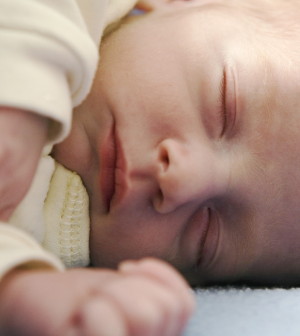- Navigating Your Midlife Crisis: Embracing New Possibilities
- City Raccoons Showing Signs of Domestication
- Mapping the Exposome: Science Broadens Focus to Environmental Disease Triggers
- One Week Less on Social Media Linked to Better Mental Health
- Your Brain Changes in Stages as You Age, Study Finds
- Some Suicide Victims Show No Typical Warning Signs, Study Finds
- ByHeart Formula Faces Lawsuits After Babies Sickened With Botulism
- Switch to Vegan Diet Could Cut Your Greenhouse Gas Emissions in Half
- Regular Bedtime Does Wonders for Blood Pressure
- Dining Alone Could Mean Worse Nutrition for Seniors
Clubs, Adult Support Can Help Kids Stay Slim


Teens who volunteer, belong to after-school clubs and have positive role models and strong adult support at school are more likely to be physically active and less likely to be overweight or obese, a new study finds.
But minority or low-income teens may not have access to these kinds of positive support, the researchers added.
“It’s a sad fact that not all teens have a parent or adult to guide them in a positive way,” study co-author Susan Babey, a senior research scientist at the Center for Health Policy Research at the University of California, Los Angeles, said in a university news release.
“If the teen also lacks adult support at school and support from a positive peer group, they sometimes emulate unhealthy characters they see in movies or on TV — which are not the best places to find role models,” she added.
Researchers looked at data from 12- to 17-year-olds in California to see what effect such “protective social factors” had on the youngsters’ physical activity levels and weight. The data was collected in 2011-2012.
According to the report, published recently in a UCLA Center for Health Policy Research Policy Brief, the proportion of teens who were physically active for an hour or more each day for at least five days a week was:
- 42 percent among teens who volunteered and 34 percent for those who didn’t.
- 46 percent for those who were in after-school clubs versus 35 percent in kids who didn’t belong to after-school clubs.
- 42 percent among those with strong support from adults at school compared with 33 percent who didn’t.
- 41 percent among those who said they had a role model and 34 percent among those who did not.
The investigators also found that 70 percent of teens with protective social factors had a healthy body mass index (BMI — an estimate of body fat based on height and weight), compared with 60 percent of those without those factors.
Low-income teens and those from minority groups were less likely to have these protective factors. For example, only 42 percent of teens from the poorest families and about the same percentage of Asian American teens had a high level of support at school. Overall, about 60 percent of teens reported high levels of support at school, the study found.
Thirty-one percent of the teens in the study participated in clubs outside of school, the findings showed. But for the poorest students, just 19 percent were in after-school clubs. Among Hispanic students, 23 percent were in after-school clubs.
About 70 percent of well-off teens had a role model, compared with about half of poor and Hispanic teens, the research revealed.
Twenty-two percent of the teens in the study said a family member was their role model, 15 percent of teens named an athlete, while 11 percent named an entertainer. Just 4 percent of teens named a teacher as their role model, and 4 percent named friends, the study authors said.
More information
The American Academy of Pediatrics has more about teens and fitness.
Source: HealthDay
Copyright © 2025 HealthDay. All rights reserved.










